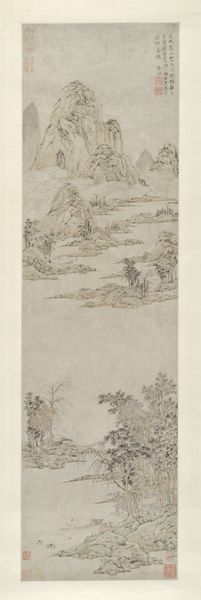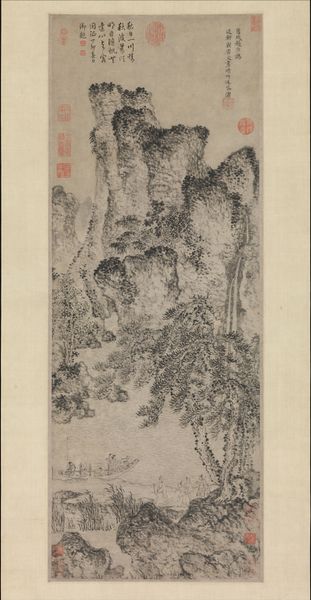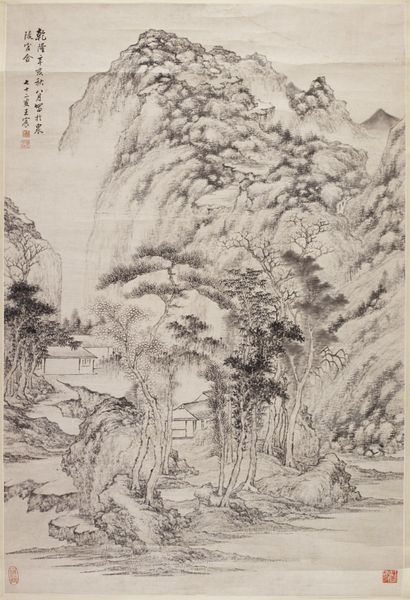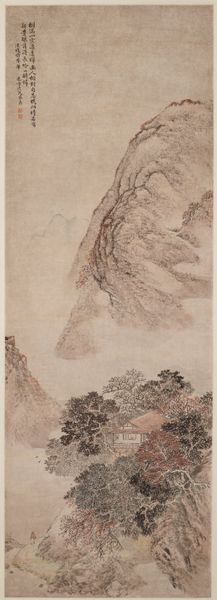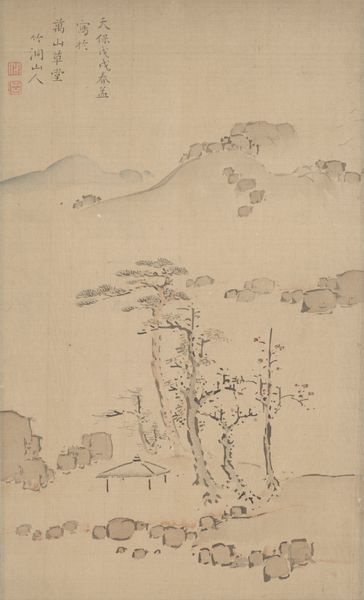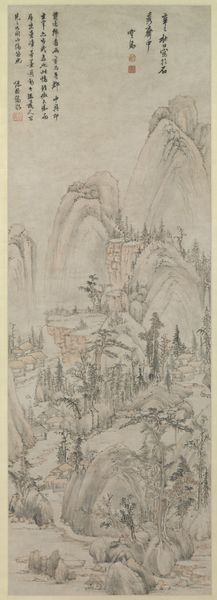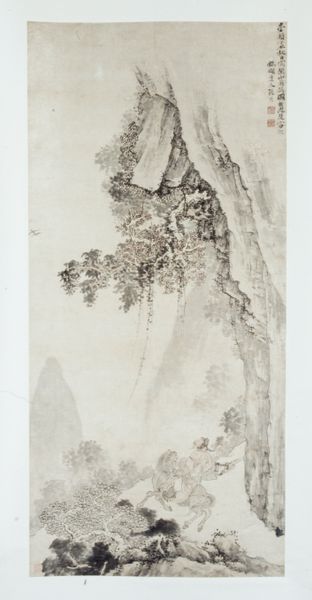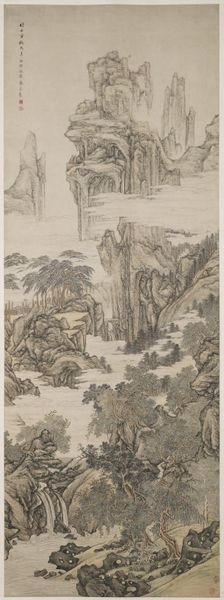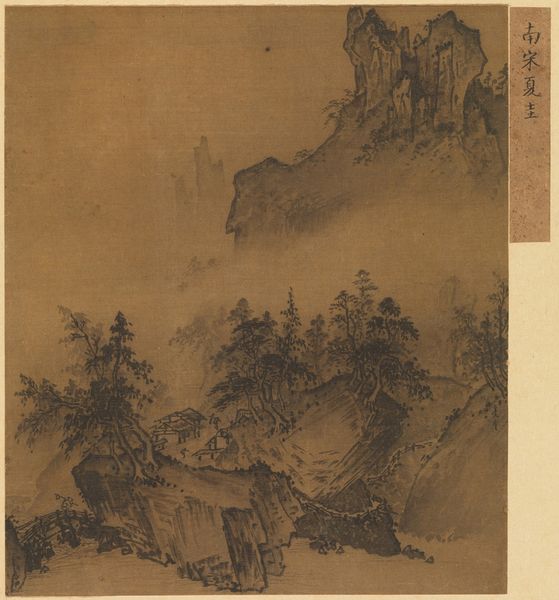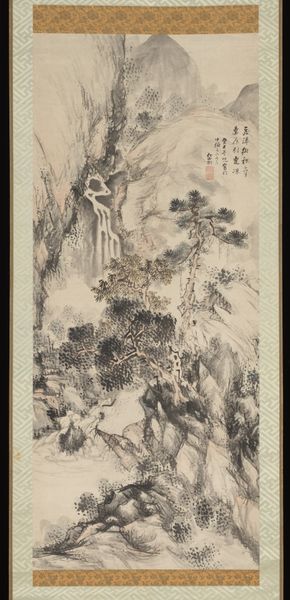
drawing, hanging-scroll, ink
#
drawing
#
medieval
#
ink painting
#
asian-art
#
landscape
#
hanging-scroll
#
ink
#
ink drawing experimentation
Dimensions: 77 9/16 x 22 9/16 in. (197.01 x 57.31 cm) (image)
Copyright: Public Domain
Curator: Xie Daoling’s "Gathering Herbs," dating to 1612, offers a compelling vista rendered in ink on a hanging scroll. Its at the Minneapolis Institute of Art. Editor: It’s quite subtle, isn't it? A wash of pale grays, almost ethereal. I feel a sense of tranquility, but also something slightly melancholic about the solitary figure at the bottom. Curator: Let's focus on the materials. Ink on paper hanging scrolls demanded particular production techniques to endure, so this monochromatic piece provides an important look at artistic consumption during the Ming dynasty. Note the quality of the paper and the varied brushstrokes to achieve depth. The landscape transforms into something much more tangible, more "real" when understood through its material production. Editor: I agree. There's certainly much we can extrapolate regarding artistic techniques and societal influence by examining the materiality of it. I also find it worth considering how landscape painting functioned within the cultural milieu of the time; often these depictions were more than pretty scenery. Here, the very act of "gathering herbs" alludes to self-sufficiency and living apart from the corrupt ruling elite, which are subtly charged political gestures of resistance. Curator: Precisely. It reveals a very conscious negotiation of materials. The precise blending of the ink shows Daoling's expertise, and suggests a degree of financial investment, of buying in to a luxury artistic mode. But what is especially relevant to this analysis, is its impact: these materials shape how we come to learn about historical perceptions of the Ming Dynasty, and artistic identity in relation to labour. Editor: And this informs Daoling’s presentation of both an aesthetic vision, and a deeply rooted social commentary, a very powerful way to criticize and present an argument in a very conformist period of cultural expression. His focus becomes a powerful expression of lived experiences from someone positioned against power. Curator: Thinking about process, and social status reflected by art in society really reframes Daoling's vision of harmony within "Gathering Herbs." Editor: Absolutely, its complexity only highlights its potential for social change. The tranquil scenes mask real rebellion.
Comments
minneapolisinstituteofart almost 2 years ago
⋮
Attended by a servant carrying a basket of herbs, a scholar pauses on a bridge beneath a pine tree and gazes upward toward his destination, a monastery visible within the mists of a distant valley. Gathering herbs was a favorite scholarly pastime, a meditative process that provided an excuse to interact with nature. Significantly, it was also a practice pursued by both Daoists and Buddhists, who believed mountains were sacred places of spiritual refuge. The mountains offered the opportunity to encounter immortal beings and therefore a path to transcendence. Alternatively, this painting could be interpreted as an example of the “visiting recluse” theme in the Chinese landscape painting tradition, in which the scholar is journeying through nature to visit a hermit in his monastery, visible through the open window of the tall building on the top left. The young servant may be carrying flowers to give as a gift upon their visit.
Join the conversation
Join millions of artists and users on Artera today and experience the ultimate creative platform.

